
2009 Condition: 1. 'Stable and maintainable'

1.History and description
At the highest point of the acropolis, towards the east end of the hill, there are the remains of an early Christian basilica. The basilica was a three-aisled structure, oriented east-west, with a narthex to the west. The aisles were separated from the nave by three large piers, which suggests that the building was vaulted or domed. The basilica was excavated by the Italian Archeological Mission and a polychrome mosaic pavement of primarily geometric design, but with one panel depicting a portico with an image of a creature under each arch was uncovered. The style and technique of the mosaic, together with the architecture of the church, indicate that this church was built in the latter half of the 6th century AD.' (Neritan Ceka ibid p59)
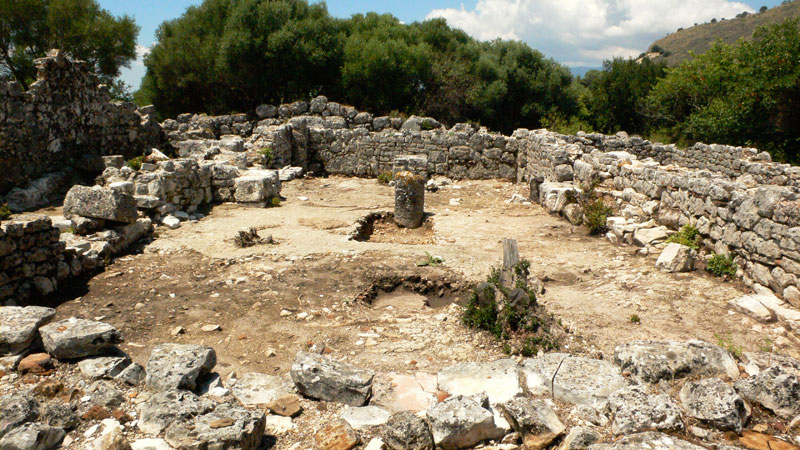
1. Acropolis basilica in July 2009
2. Environment.
Situated at the crown of hill of Butrint, the basilica is in a stable and dry environment founded on rock. One problem caused by this is that any tree growth tends to be of species that have vigorous and deeply seeking robust root structures that grow fast and far in search of nutrients and water. The trees themselves tend to be slow growing and tough wooded. This growing habit poses a threat to masonry, plaster and contrapesto floors and mosaic.
This area was subject to clearance and consolidation in 2007 (see Acropolis basilica Autumn 2007). Prior to that the site was extremely overgrown:
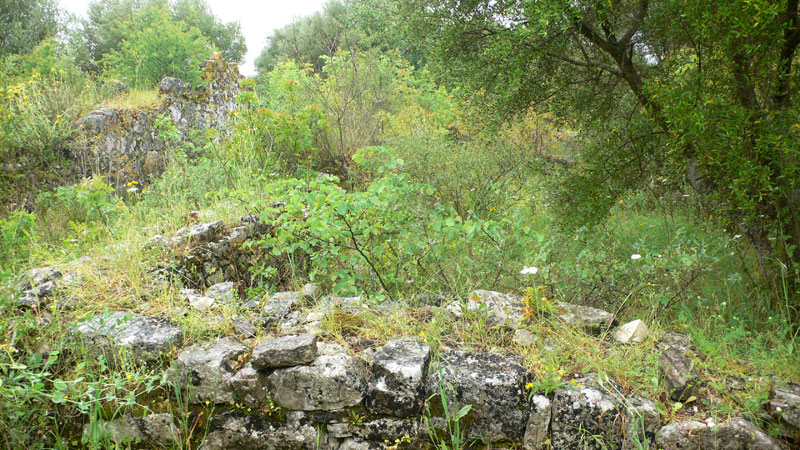
2. Acropolis basilica in April 2007
3. Materials and construction
Several periods of build using different techniques. Original walls well mortared in limestone rubble, later walls less well bonded and unmortared, earliest walls use archaic masonry techniques. Later walls use spolia from earlier builds including decorative elements reused as simple infill.
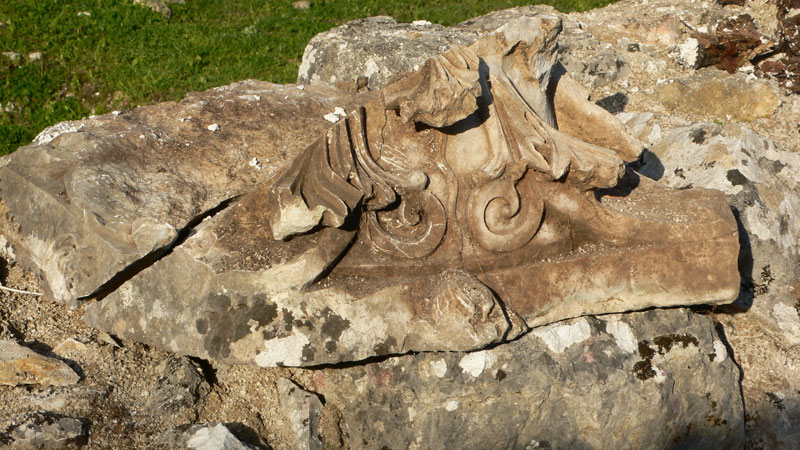
3. Corinthian capital found in wall interior
At floor level there are mosaics and plaster and tile surfaces:
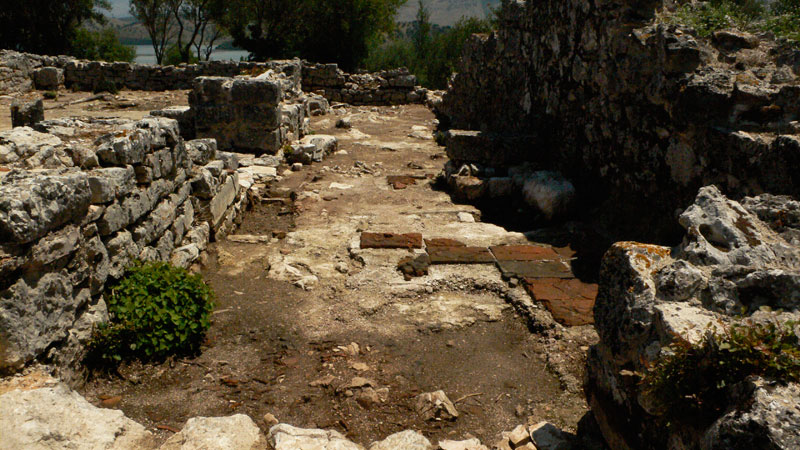
3. Tile and other floor surfaces/grave to left
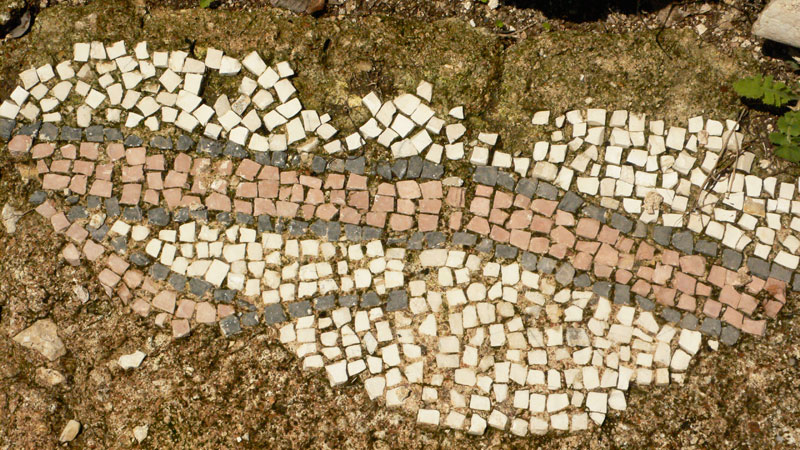
4. Mosaic fragments
Floor surfaces exposed in the excavations of 2008/9 have been overfilled.
4. Previous conservation.
This area has been subject to several sequences of excavation, clearance and conservation from the earliest work by the Italian Archeological Mission to the recent floor consolidation work undertaken in July 2009 by Agron Islami.
In the spring of 2007 the area was cleared to be archeologically examined by Erjona Quilla of Butrint National Park, her work being followed in the Autumn of 2007 by more extensive vegetation clearance and a programme of masonry consolidation:see Report ( a joint project between Butrint national Park and the Butrint Foundation). Further work to maintain a vegetation free monument was done on the summer of 2008 and continued into the summer of 2009. The site was backfilled to protect floors and opened post holes, graves etc in the late summer of 2009.
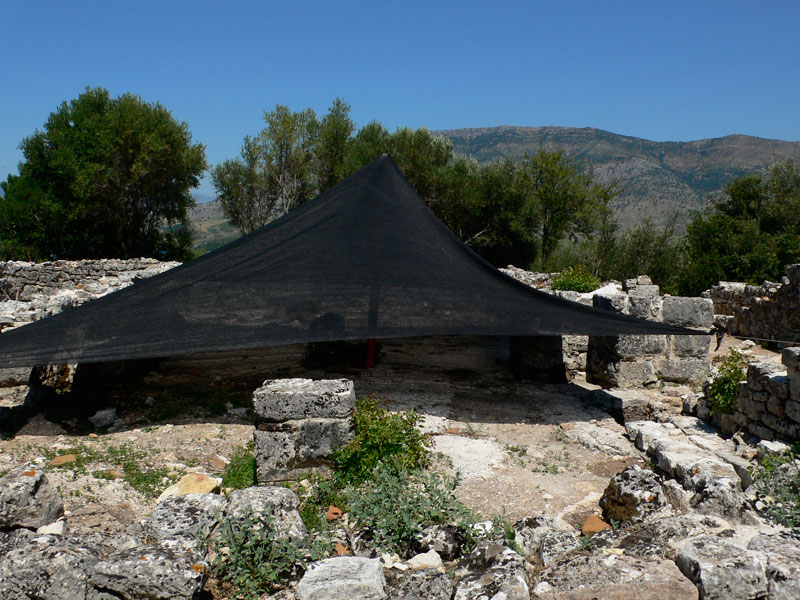
5. Conservation work being undertaken on plaster floor- note swift vegetation regrowth
5. Structural stability and present condition.
Although it is likely that more work will be necessary in two areas- floor surface consolidation and vegetation control- this monument is now felt to be in a stable and maintainable condition. It should be noted however that condition can change drastically in a matter of months if vegetation management and regular maintenance are not undertaken.
6. Recommendations.
| Reference Number | Recommended work |
Priority |
| 20.1.
|
The glory of god was served by both the architecture and siting of the basilica. This basilica was built on top of a promontory and afforded unparalleled views of the surrounding spectacular countryside- with this in mind it is strongly suggested that the trees that surround the monument is radically thinned to allow this awe inspiring view to be enjoyed by the person who takes the trouble to make the climb. | A |
| 20.2. | Subsequent to radical thinning of the surrounding woodland, the woods should be kept clear of underbrush and creepers by regular maintenance. | B |
| 20.3. | All perennial growth in and on the monument must be eradicated by judicious use of herbicides. Failure to do this will result in unstable masonry and disrupted floor surfaces. | ongoing |
| 20.4 | This part of the site is poorly explained. Therefore it is recommended that an InkLink or other explanatory board is erected which gives information both about the basilica and also the surrounding countryside. | C |
| 20.5 | Signage and pathway also poor, it is recommended that both be improved | C |